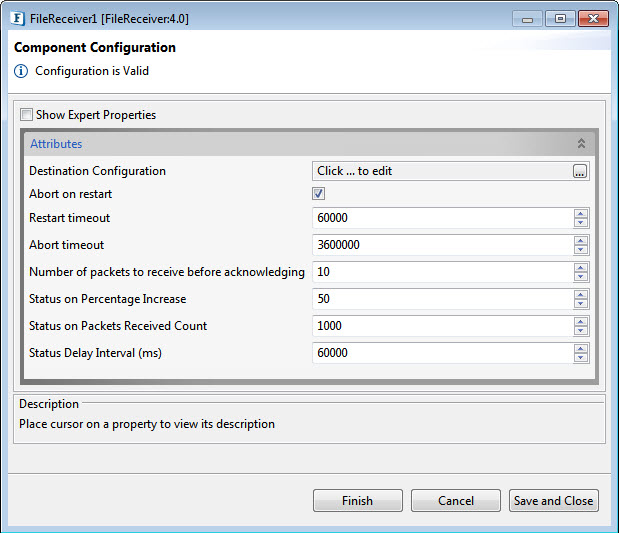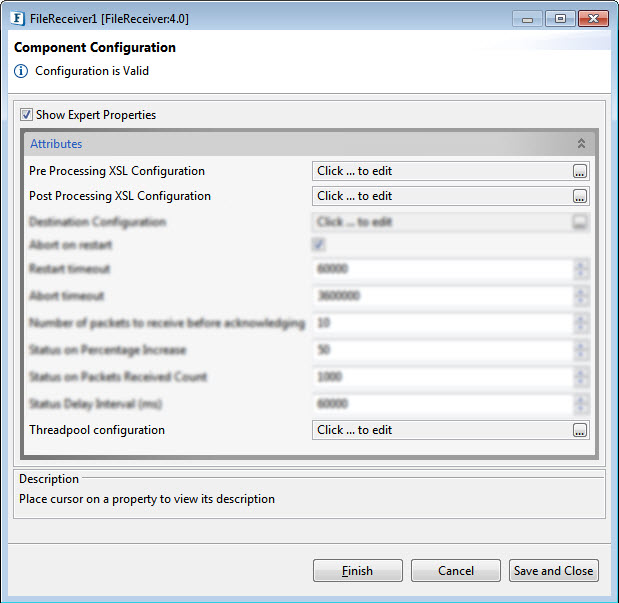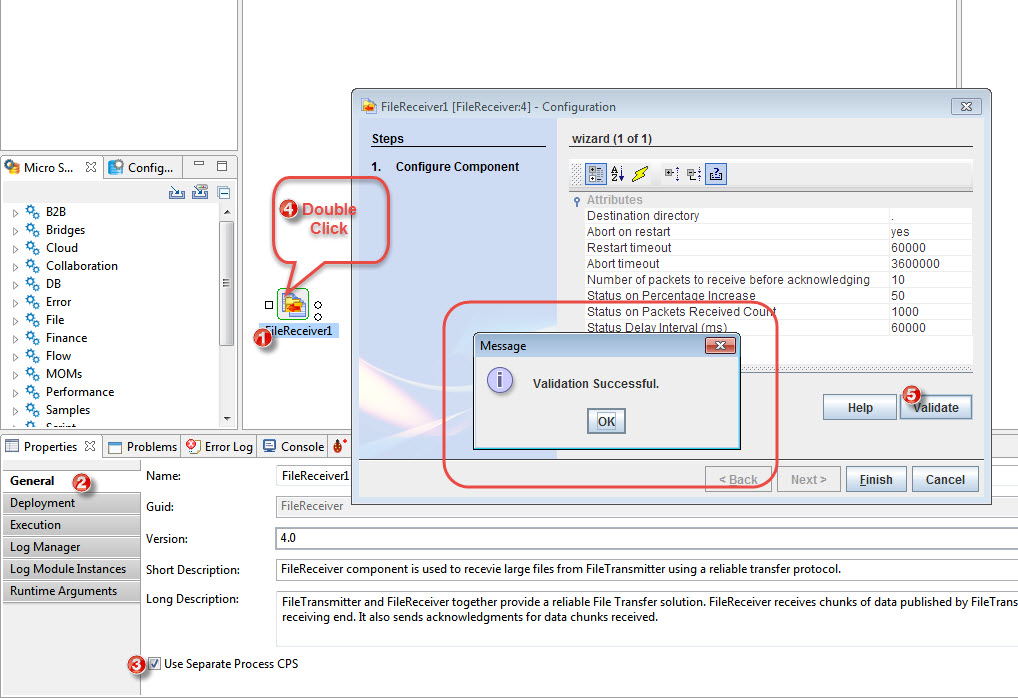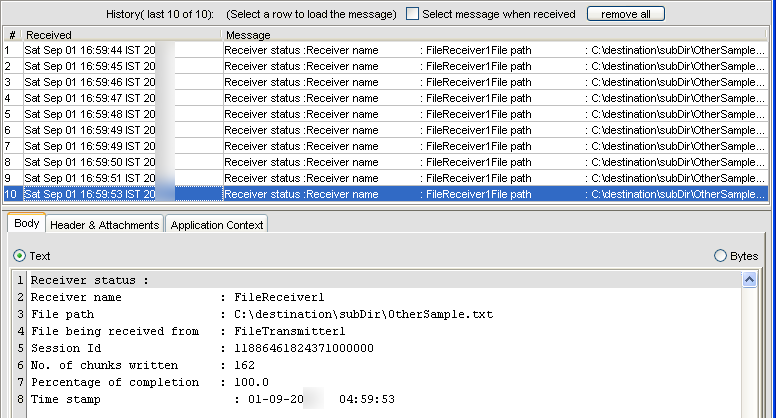FileReceiver
The FileReceiver component writes the data received on its input port to the output file specified by the user.The component provides flexible monitoring capabilities and robust acknowledgement mechanism.
FileTransmitter and FileReceiver components work together as a unit. These components should not be decoupled.
Configuration and Testing
The Configuration property sheet of File Receiver is shown below.

Figure 1: Sample FileReceiver Configuration
Attributes
Destination Configuration
Click the ellipsis button to provide the lcation of the destination directory.
Destination directory
Directory where the files being received are to be put by default (in case the 'Send' command doesn't specify the destination directory). Relative destination path names specified in the 'Send' command would be evaluated under this directory.
Abort on restart
'Yes' aborts all file transfers in progress when the component restarts.
Restart timeout
Time (in milliseconds) to wait before resending the receipt status of a particular file to the Transmitter.
Abort timeout
Time (in milliseconds) to wait before sending an Abort packet to the Transmitter to abort transfer of a particular file.
Number of packets to receive before acknowledging
Number of packets to receive before sending the chunk receipt status to the corresponding Transmitter.
Status on Percentage Increase
Maximum increase in percentage completion before the FileReceiver sends another status report.
Status on Packets Received Count
Maximum increase in the number of chunks received before the FileReceiver sends another status report.
Status on Delay Interval
Maximum delay, in milliseconds, before the FileReceiver sends another status report.
Expert Properties
Enable the Expert Properties view to configure these properties.

Figure 2: Sample FileReceiver Configuration
Pre Processing XSL Configuration
Pre Processing XSL configuration can be used to transform request message before processing it. Click the ellipses button against the property to configure the properties.
Refer to the Pre/Post Processing XSL Configuration section under the Common Configurations page for details regarding Pre Processing XSL configuration and Post Processing XSL configuration (below).
Post Processing XSL Configuration
Post Processing XSL configuration can be used to transform the response message before sending it to the output port.
Threadpool Configuration
This property is used when there is a need to process messages in parallel within the component, still maintaining the sequence from the external perspective.
Refer to the Threadpool Configuration section under the Common Configurations page.
Validating the configuration
To validate the configuration, open the CPS after enabling the Use Separate Process CPS option and click the Validate button.

Figure 3: Validating the configuration
This validation does not check the existence of the destination directory.
FileReceiver Ports
Input Ports
- Data – Receives file data.
Output Ports
- Status – Sends the status of file(s) being received.
- Acknowledgement – Sends acknowledgements to the File Transmitter(s).
Functional Demonstration
Below figure shows the event process where a FileReceiver receives files transmitted by FileTransmitter.

Figure 4: Event process showing the File Transfer microservices
Scenario 1
FileReceiver receiving a file transmitted by the FileTransmitter.
Sample Input
The below shown input is sent to the FileTransmitter from the Feeder.

Figure 5: Input from Feeder component
Sample Output
The below shown figure shows the status messages sent by the FileReceiver component.

Figure 6: Status message from FileReceiver component
Useful Tips
- Make sure that the three properties Status on Percentage Increase, Status on Packets Transmitted Count, and Status on Delay Interval are configured depending on the requirement. If all the three are set to small values, the component sends many status messages.
- If file transfer is across internet, the property Restart timeout needs to be tuned appropriately to a higher value in order to avoid FileReceiver sending additional acknowledgements unnecessarily.
- The component's cache must always be set to yes, otherwise the component will not be able to resume a transfer on restart.
To understand the service better, refer the File Transfer example which demonstrates FileReceiver service features.
